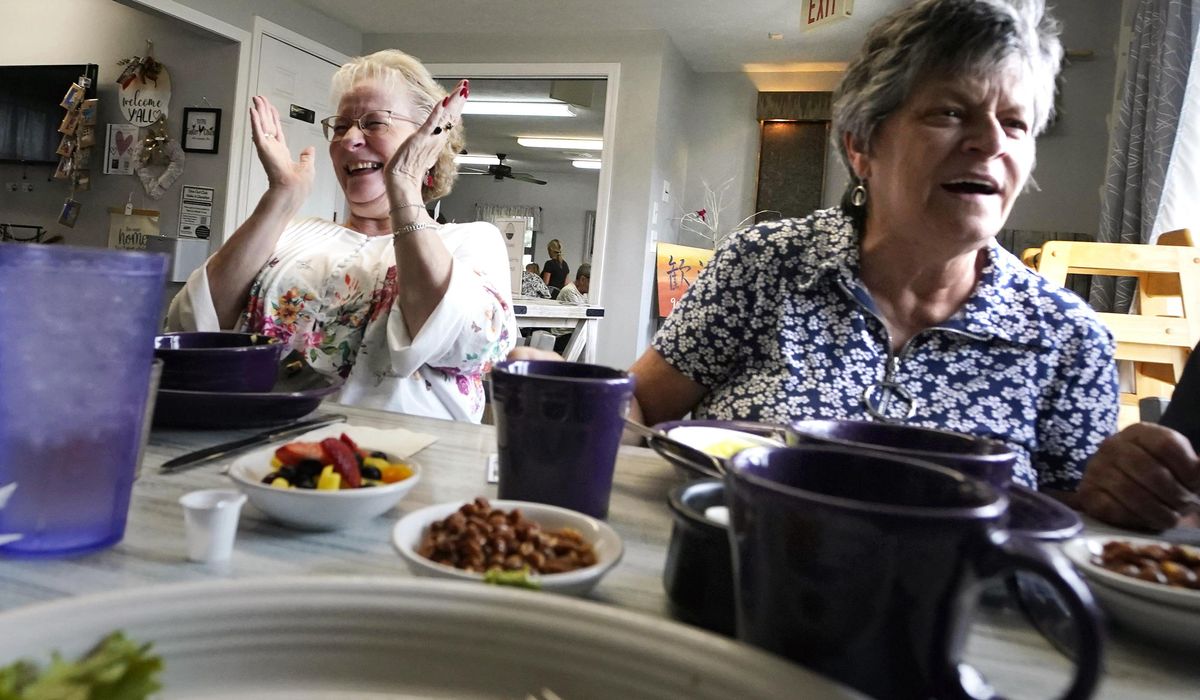Nourishing More than Just Bodies: How Restaurants are Enhancing Senior Citizens’ Social Lives
September 3, 2023 | by Kaju

A group of friends and neighbors, all over 60 years old, meet weekly for a meal at a local restaurant. These meals are paid for by social programs designed to promote healthy eating for older adults. While enjoying nutritious food, they engage in conversation and laughter, discussing topics such as family, politics, and current events.
But this isn’t your typical senior center gathering. In fact, some senior centers have lost their appeal, and others have even closed down, leaving seniors longing for social interaction.
However, an elegant solution has emerged – using federal and state money allocated for senior meals to support struggling restaurants. These restaurants provide balanced meals with more choices, flexible timing, and a welcoming atmosphere that combats loneliness and encourages socialization among seniors.
The president of Meals on Wheels in New Hampshire’s Hillsborough County, Jon Eriquezzo, emphasizes the importance of addressing isolation among seniors. While delivering meals to homebound seniors is helpful, the opportunity for seniors to gather and support each other is invaluable.
Seniors today lead busy lives, often balancing work, caregiving, and medical appointments. They may not be able to attend scheduled meal times at senior centers. Moreover, after spending years cooking for others, seniors appreciate the luxury of ordering meals at a restaurant.
Various restaurant programs cater to different communities, including rural areas, those with limited transportation options, and minority populations. The focus is on meeting the needs of seniors who require additional support.
According to Meals on Wheels America, one in four Americans is at least 60 years old, with 12,000 more reaching that milestone every day. Furthermore, half of all seniors living alone lack sufficient income to cover their basic needs. Thus, it is crucial to address the challenges faced by this vulnerable population.
Debbie LaBarre, a senior participant in one of these restaurant programs, looks forward to her weekly gathering at a local eatery. The menu provides detailed nutritional information, and the meals meet the requirements set by the Older Americans Act Nutrition Program. For LaBarre, the social interaction is just as important as the food itself. She is determined to remain socially active and ward off the effects of Alzheimer’s disease.
For seniors who may face difficulties with transportation, LaBarre brings along a visually impaired friend to another participating restaurant. The opportunity to dine out and socialize is a rare treat for her friend.
From a nutritional perspective, eating in groups has numerous benefits, especially for vulnerable populations like seniors. Research shows that people tend to consume healthier meals when surrounded by others who make healthy choices. Additionally, loneliness among seniors can have severe health consequences, similar to smoking several cigarettes per day.
These restaurant programs align with the goals of the Older Americans Act, which aims to reduce hunger, promote socialization, and improve the overall health and well-being of seniors. While restaurant-based dining was initially explored in the 1980s as an alternative to traditional meal gatherings in senior centers, it has gained popularity in recent years.
Restaurant partnerships have emerged in various states, including South Carolina, Iowa, New Hampshire, and New Jersey. The COVID-19 pandemic highlighted the need for alternative approaches to senior meal programs, leading to the expansion of restaurant partnerships in many communities.
Local restaurants and area agencies on aging team up to provide these services. The federal Administration for Community Living oversees the nutrition services program and supports innovative projects through grants. However, there is limited data on the number of restaurants and participants involved in these programs, as well as the overall costs. Research projects are underway to gather more information and assess the effectiveness of these initiatives.
Although funding for these programs is distributed at the state level, it is crucial to find ways to sustain them. Restaurants are reimbursed for providing meals, but finances can be challenging, especially as COVID-related emergency funds are depleted. Adjustments may need to be made, such as offering smaller portion sizes or reducing the number of monthly meals. Additionally, some programs offer grab-and-go options, dining services at grocery stores, food trucks, and catering services at community locations.
Despite the financial challenges, partnering with restaurants is more cost-effective compared to renting spaces at town halls or churches for community dining. Restaurants benefit from increased business and the opportunity to form connections within the community.
Seniors, like Robert Mays from South Carolina, enjoy the social benefits of these programs. The weekly gatherings foster a sense of community and bridge divides between different racial and ethnic groups.
As the population of older adults continues to grow, it is essential to nourish their bodies and social lives. By leveraging the resources of struggling restaurants and promoting socialization among seniors, these programs create a win-win situation for everyone involved.
Focus keyword: restaurant-based programs for seniors
RELATED POSTS
View all


